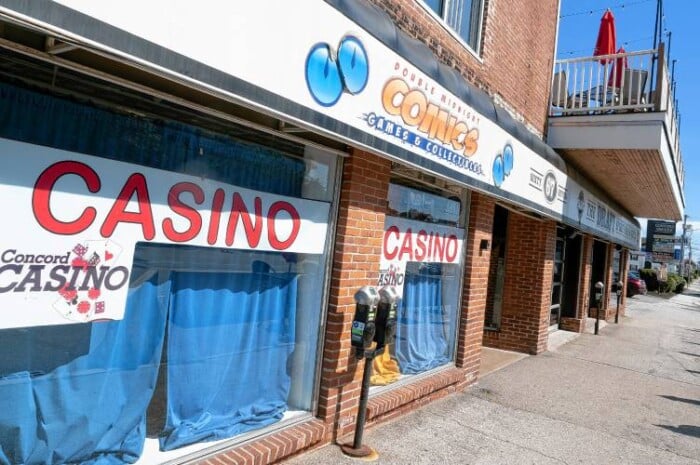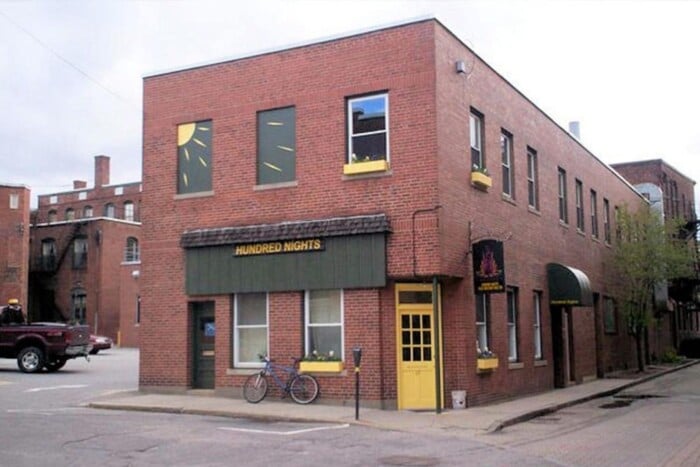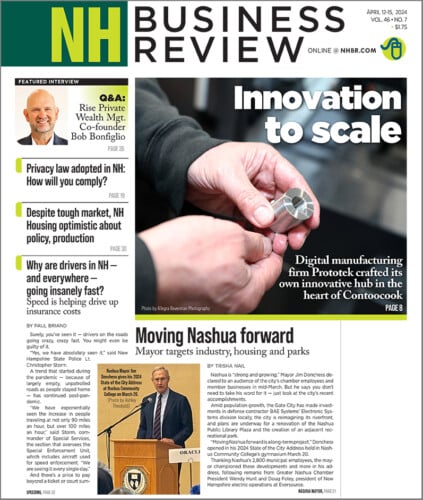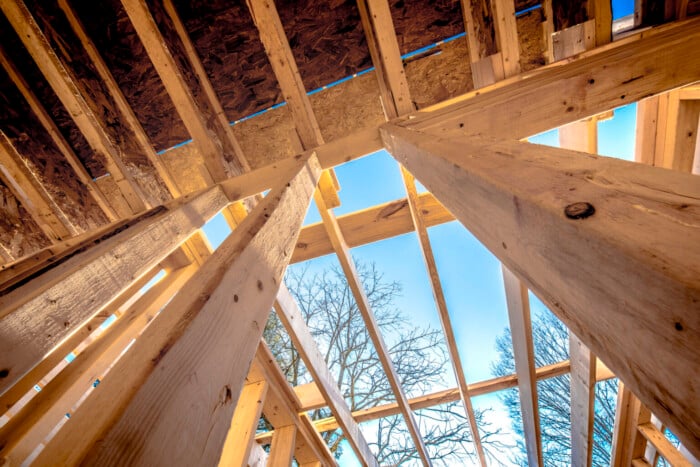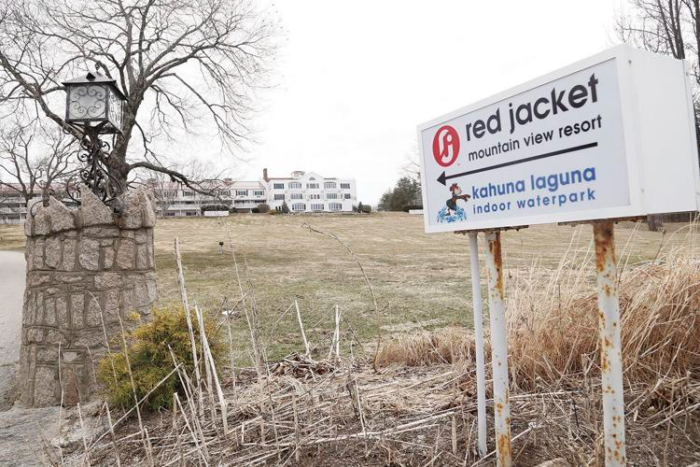NH real estate slowdown seen in fewer mortgages
Home prices starting to decline, but not fast enough for future homebuyers
Much like the rest of the country, the slowdown in the residential real estate market here can be seen in the bellwether of fewer loans.
In fact, certain areas of the Granite State have seen a sharper decline in new mortgages than the national average in the last two quarters of 2022, according to new data.
An ongoing decline
ATTOM, a curator of national real estate data, reports that 24 percent fewer mortgages were secured by homeowners in the fourth quarter of 2022 as compared to Q3 2022.
The ongoing decline in residential lending resulted from some of the largest downturns in both refinance and purchase loan activity this century along with the first drop in home-equity lending in a year, according to ATTOM.
ATTOM looked at three categories of lending: mortgages, refinances and home equity lines of credit (HELOC).
In New Hampshire, two large regional swaths had declines in all three categories, both in comparisons of Q4 to Q3 2022 and of Q4 2022 to Q4 2021, according to the ATTOM data.
The two areas are the Metropolitan Statistical Areas (MSA) that include the Hillsborough County region and the Rockingham County/Strafford County region. The Rockingham/Strafford region is part of the Boston-Cambridge-Newton, MA-NH MSA that also includes Essex, Middlesex, Norfolk, Plymouth and Suffolk counties in Massachusetts.
For the Hillsborough County region, ATTOM’s data shows:
- A 29.7 percent decline in mortgages in the fourth quarter of 2022 versus the second quarter, and a 43.4 percent decline Q4 2022 vs. Q4 2021.
- A 15.2 percent decline in refinances Q4 vs. Q3 2022, and a 70.7 percent decline Q4 2022 vs. Q4 2021.
- A 35.3 percent decline in HELOCs Q4 vs. Q3 2022, and a 8.9 percent decline Q4 2022 vs. Q4 2021.
For the MAS that includes the Rockingham/Strafford region, the data shows:
- A 31.2 percent decline in mortgages Q4 vs. Q3 2022, and a 39.4 percent decline Q4 2022 vs. Q4 2021.
- A 16.8 percent decline in refinances Q4 vs. Q3 2022, and a 75.6 percent decline Q4 2022 vs. Q4 2021;
- A 21.2 percent decline in HELOCs Q4 vs. Q3 2022, and a 6.7 percent decline Q4 2022 vs. Q4 2021.
“The lending industry experienced a triple-dose of hits in the fourth quarter of last year as mortgage rates kept rising to levels not seen in more than 15 years and the U.S. housing market continued to stall after a decade of prosperity,” said Rob Barber, chief executive officer at ATTOM.
“Rates have settled back down a bit so far this year, going back and forth in small amounts. That could lure some potential homebuyers back into the market, especially if prices keep dropping. It also could spur some renewed refinance and HELOC action,” he added.
Banks and other lenders issued a total of 1,518,933 residential mortgages in the fourth quarter of 2022 — the lowest number since the first quarter of 2014, according to ATTOM.
The data underscores the mood of Granite Staters and how they feel about buying a house these days.
A NH Business and Industry Association consumer confidence poll conducted by the University of New Hampshire Survey Center showed that most New Hampshire residents remain pessimistic about economic conditions in the state, citing housing affordability as a significant problem.
Nearly half of state residents report spending 30 percent or more of their income on housing expenses, and virtually no one in the survey thinks it is a good time to buy a house in New Hampshire.
“Increasing a diversified housing stock that includes options affordable for more workers has long been a public policy priority for BIA and our members,” said Michael Skelton, president and CEO of the BIA. “Many factors contribute to the state’s worker shortage, but the need for more housing is the most pronounced. BIA will continue to advocate for state efforts to restore balance to New Hampshire’s housing supply, which will help businesses, provide more opportunities for workers and strengthen the state economy.”
The report showed some improvement in respondents’ feelings about their personal finances, corresponding with inflation beginning to ebb slightly and unemployment remaining historically low.
However, the survey shows pessimism remains high. Fifty-one percent of respondents think their household is worse off than a year ago, only 13 percent say they are better off, and 35 percent say their finances are about the same. The percentage of residents who say they are worse off (51 percent) has declined since November (61 percent). Among those with a household income below $75,000, 54 percent say they are worse off than 12 months ago, down from 74 percent in November.
Home sales market
The market has cooled significantly in what has been the state’s hottest area for residential real estate: the Seacoast region.
The month of February is typically slow for real estate sales, but the 26 sales reported by the Seacoast Board of Realtors in its monthly trends report was the fewest for any month since the board began keeping records in 2010.
Still, the median sale price improved $27,000 from last month to $637,000, up 5.9 percent from last year. The market is now down 6.2 percent for the first two months of the year.
Condominium sales came in almost exactly where they did last year at 26 transactions (versus 25 in 2022). The February median sale price was $454,600, a drop of more than $200,000 from last month’s record monthly high of $661,898, and off 3.2 percent from last year.
“We are seeing the blend of interest rates, rising prices and modest inventory, all attributing to the slow market,” said Seacoast board president Sandy Healy with RE/MAX On the Move/Exeter. “February is historically the slowest month of the year for real estate.”
Statewide, the numbers from the New Hampshire Association of Realtors tell a similar story.
There were 19.6 percent fewer residential single-family home sales in February compared to February 2022, according to NHAR data.
The association notes that “affordability constraints continue to limit homebuyer activity overall, with existing-home sales declining for the twelfth consecutive month …”
The median price of a single-family home was $425,000, up from last year’s $405,000 but far from the peak price of $460,000 in May and June of 2022.
The NHAR data showed the number of residential condominium sales was down 18.1 percent, while the median price was $342,000, compared to $288,000 a year ago.
The affordability index for a house was 72, while the index was 90 for a condo. A value of 100 indicates that the typical median-income family has exactly enough money to qualify for a home. Any value below 100 means that a family may struggle to qualify for a mortgage on a home in a particular area. The lower the value, the greater the struggle to afford the mortgage.
A year ago, the affordability index in New Hampshire for a house was 96.
Rockingham County remains the priciest area in which to purchase a house. The median price in February was $530,000. The other counties in order by price are: Hillsborough $460,000; Merrimack $445,000; Strafford $384,000; Carroll $375,000; Grafton $353,000; Belknap $350,000; Cheshire $305,000; Sullivan $300,000; and Coos $206,000.

